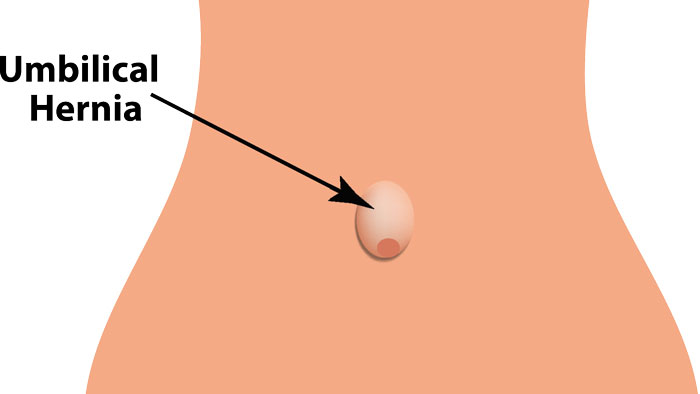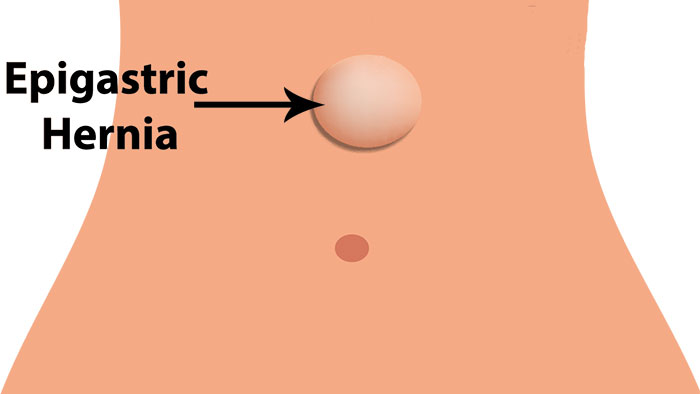Umbilical or epigastric hernias occur when a part of the intestine pushes through an opening in the abdominal, or stomach, muscles.
These types of hernias are most common in infants and will typically resolve on their own within the first five years. (Although if you suspect your child has one, you should consult with your pediatrician.)
Sometimes, however, umbilical and epigastric hernias are diagnosed or develop later in childhood or in adulthood. While they usually do not cause major complications when developing later, they still must be surgically repaired — especially in adults.


In most cases, it is not known why an umbilical or epigastric hernia develops in adults. The primary risk factors are being overweight or having prior pregnancy, either of which can cause an opening in the abdominal muscles to expand over time.
Conditions, behaviors and activities that put strain on or weaken the abdominal wall can also cause umbilical or epigastric hernias. These include:
Signs and symptoms include:
Your doctor will review your medical and surgical history and then carefully examine your abdominal area. You will likely be asked to stand and cough so the doctor can see or feel a bulge that indicates a hernia.
If you have an umbilical or epigastric hernia, your doctor will often order imaging tests, such as:
These scans will help your doctor determine your hernia's location and help determine the surgical strategy.
There are three primary treatment options for umbilical and epigastric hernias. The method used to treat your hernia will depend on your hernia's size and location, your general health and your expected level of physical activity in the future.
Surgical repair of an umbilical or epigastric hernia involves closing the weakness in the abdominal wall and reinforcing it, sometimes with synthetic mesh material.
The surgeons at the Brigham and Women's Hospital Hernia Program are highly experienced in the full range of surgeries for umbilical and epigastric hernias, including:
As part of their role at a major academic medical center, our surgeons keep up-to-date on and incorporate into their practice the latest advancements in hernia surgery. In some instances, our surgeons are performing research that guides hernia care across the country and the world.
To learn more about the Hernia Program’s multidisciplinary approach to patient care or to schedule an appointment with one of our specialists, please call 617-525-9726. Our providers see patients at the following locations:
TBD: patient resources to be listed here (e.g. PDFs on preparing for surgery, plastic surgery, recovery post-surgery).
For over a century, a leader in patient care, medical education and research, with expertise in virtually every specialty of medicine and surgery.
About BWH